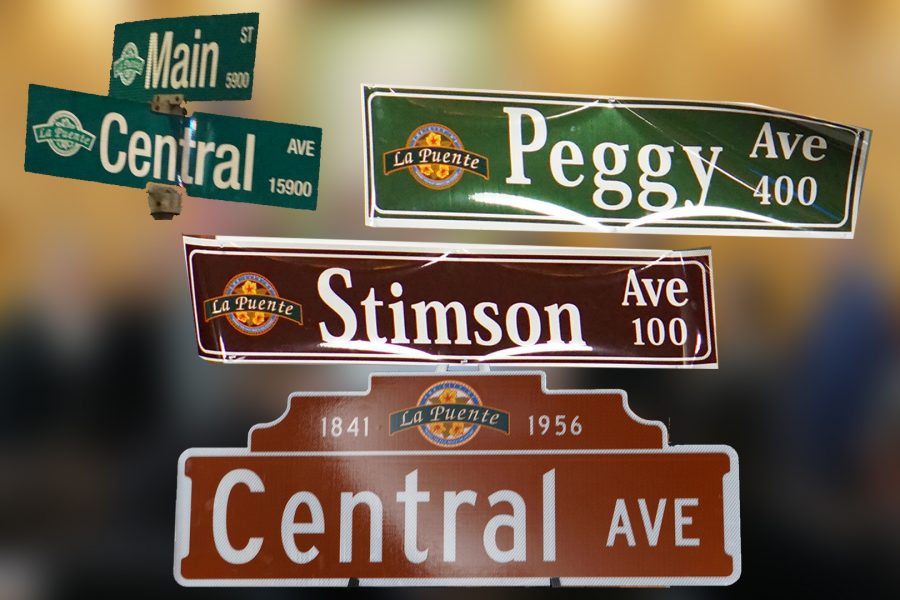Soon residents around La Puente will know the exact boundaries of the city, thanks to an initiative to improve signs throughout the city.
The first mockup signs were introduced at the Jan. 22 council meeting where council chose between a green and brown version of the signs in a serif font.
The council then voted a unanimous 5-0 in favor of the brown version.
The brown version was not council member Violeta Lewis’ first choice, but after shining a light on it in the dark, she said it “popped” better than the green version.
This visibility was also the reason Lt. Pete Cacheiro supported the decision to go brown. Cacheiro furthered said he agreed with a proposal council member John Solis made regarding any potential change.
“If we do it, we need to do one clean sweep,” Solis said.
The current plan then became a question as to whether or not to use the “heritage” style city street name signs throughout the city and whether poles will also be repainted as well.
The current fiscal cost to create 900 city street signs is approximately $80,000 with only 450 in the heritage style. To make all street signs in the heritage style, it will cost the city $95,000.
The example provided to the council was a lighter brown than will be used, but the council still picked the sign style they would prefer of three options.
Lewis commented that the bell would not be recognizable from a distance, but said having the logo in the center is the better design. Council members Dan Holloway and Solis along with mayor pro tem Charlie Klinakis agreed with Lewis’ decision. Klinakis offered a suggestion that the bottom sign could be without the logo, but other council members wanted the double logo. Klinakis then suggested a mock up, which will be provided at the next meeting.
Another change to the city is the expansion of Lewis’ LEAD program into a potential Project LEAD Youth Advisory Board comprised of five high school and four middle school students to advice the city council on issues affecting the younger demographic of La Puente.
Project LEAD students in middle school would apply to serve a one year term, while high school students would apply to serve a two year term.
The main concern the council explained about this expansion is a worry that the high school teachers will feel it is one more thing added on, but Lewis also added that she does not want to lose the engagement of these students because there is no program in high school.
This youth advisory board is planned to meet once a month once it is formally established, but costs and other specifics are still being worked on in the meantime.



